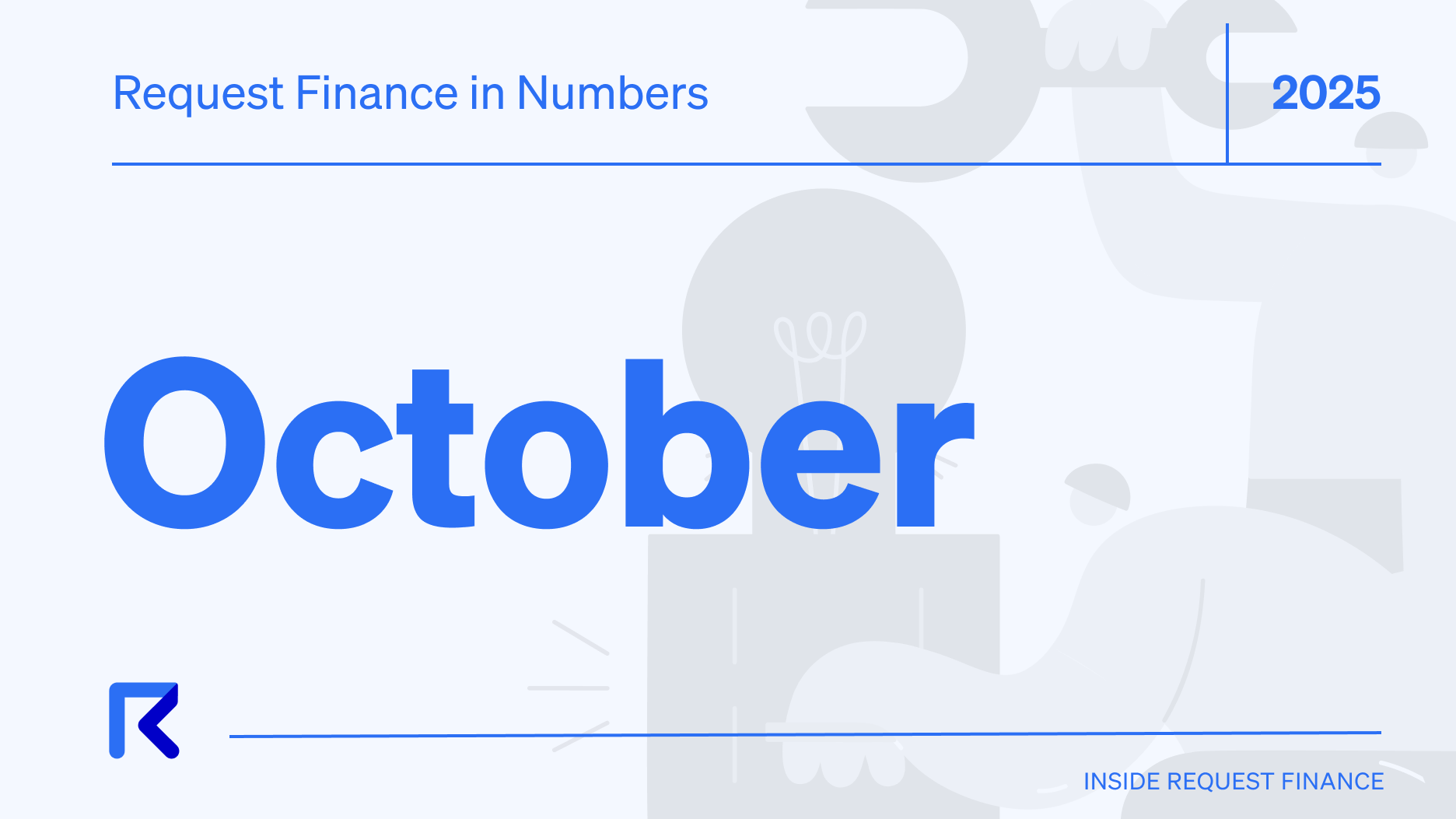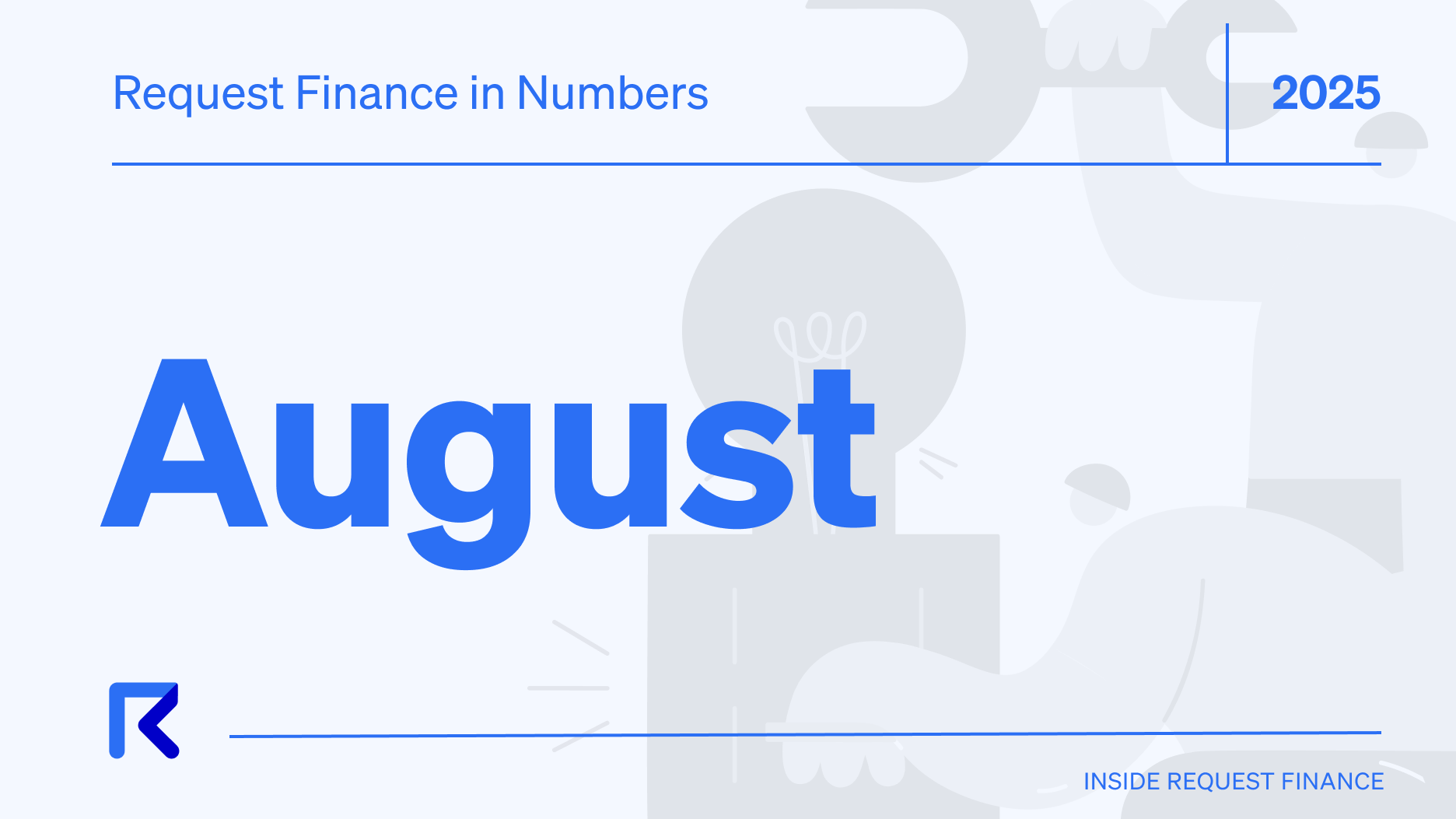Understanding And Managing Crypto Invoicing For Web3 Freelancers
Learn how you can get paid easily in crypto by reducing manual tasks, automating reminders, and simplifying tax reporting.

Billing your clients, and accepting payment for your services in cryptocurrencies and stablecoins is a critical part of being a freelancer in Web3.
For one, Web3 clients prefer to pay out of their crypto treasury wallets so that their assets and liabilities are in the same currency.
Most DAOs have their treasury in their native token. A study from Chainalysis published in June 2022, found that a whopping 85% of DAOs store their entire treasury in a single crypto asset — typically their native governance token.
According to data from over 2,000 crypto companies using the Request Finance app, of nearly $300 million in crypto payroll, expenses, and invoices paid since January 2021, an estimated 60% was in USD-stablecoins.
Secondly, accepting crypto payments as a Web3 freelancer also allows you to gain access to DeFi platforms to invest a portion of your savings at yields typically far higher than traditional bank savings accounts.
Challenges in accepting crypto payments. Invoices is the most common way for freelancers to request for payments from their clients. Typically, this involves using a Word or Excel template to create a PDF invoice, with your payment instructions, which is then sent via email to a client.
But for freelancers serving Web3 clients, invoicing clients in crypto this way poses four unique challenges.
Ready to Supercharge Your Crypto Accounting?
Stop wasting time, manually creating journal entries. Automate your accounting now, and enjoy error-free reporting
Learn how to scale your company's crypto & fiat financial operations
Your financial complexities are our specialties. Schedule your free consultation today and discover how Request Finance can transform your financial operations
Simplify crypto and fiat financial operations today
Rely on a secure, hassle-free process to manage your crypto invoices, expenses, payroll & accounting.
1. Admin hell
For one, this is an incredibly manual and laborious process, especially if you grow to have multiple freelance clients. It's a nightmare when you got to between 4-5 clients per month.
Despite the fact that it is how we collect our hard-earned money for the freelance work we do, it is a necessary chore. There is little joy to be found in editing Excel templates, saving PDFs, and sending them as attachments.
There are going to be months where you simply forget to send your invoices to your smaller clients!
2. Risk of payment errors
Secondly, and more importantly, having the client copy and paste your wallet address from a PDF invoice runs the very real risk of delays and errors in paying you.
As you can imagine, long strings of hexadecimal addresses are easy to mix up, or copy wrongly. A good example of this is how PeopleDAO’s crypto payroll operations were hacked for 76.5 ETH using Google Sheets.
The higher the risk of payment errors, the more problems you could face in getting paid in crypto as a freelancer.
3. Payment reminders and confirmations
Thirdly, creating and sending invoices manually like this means having the manually send payment reminders, or check in with their finance departments on the status of the invoice payments.
Even after you have been paid, you would want to check the block explorer, as well as your wallet to confirm that the crypto payment has been made and received.
Going back and forth over email like this only adds to the frustrations of getting paid as a Web3 freelancer.
4. Tax reporting
Fourth, but certainly not least is that if you are accepting payments in crypto or stablecoins as a freelancer, you may be subject to income taxes, or capital gains taxes.
This often means having to pull all the data from your PDF invoices, and manually calculating what your income in crypto was in a given year.
But here’s the problem - whether it's income taxes on stablecoins, or capital gains taxes on more volatile cryptocurrencies like ETH, one of the key inputs you’ll need to calculate your taxes is the cost basis; the market value of the crypto or stablecoin when you acquired it.
Given the fluctuating prices of USD-pegged stablecoins relative to your jurisdiction’s home currency, or the fluctuating exchange rate of your cryptocurrency in fiat terms, this can make tax reporting a nightmare.
How to send crypto invoices? Fortunately, there are crypto invoicing apps like Request Finance that can allow you to simplify and automate getting paid in crypto as a freelancer.
Here are some ways that apps like Request Finance make it easy for you to get paid in crypto:
1. Schedule send crypto invoices
Instead of editing Excel templates, saving PDFs, and sending them as attachments, apps like Request Finance allow freelancers to create beautiful, professional looking invoices.
Better still, the app can allow freelancers to automate the billing process by scheduling when to send out the invoices each month, or at a specified date.
This completely eliminates the work on your end each month, while ensuring your invoices go out to the clients on time.
2. No risk of payment errors
Crypto invoicing apps like Request Finance eliminate the risk of payment errors, enabling clients to pay you easier in crypto.
For one, when they click the link in the email, or scan the QR code attached, it opens up your invoice in the app, with your name, wallet address, preferred token and blockchain network.
All they need to do is to connect their wallet, and hit pay.
3. Automated payment reminders and confirmations
Not only do crypto invoicing apps like Request Finance allow you to automate sending the invoices to your clients, they also allow you to schedule payment reminders.
These allow you to automate email notifications for upcoming or delayed payments.
But better still, as soon as your freelance clients approve, or pay your invoice - Request Finance monitors the blockchain and sends you an automatic notification of the payment status.
You can also see all of your past invoices in a single dashboard, and sort them by client name, email addresses, payment status, and more.
4. Simplify crypto tax reporting
Lastly, sending crypto invoices in Request Finance also has the benefit of simplifying crypto tax reporting.
Forget having to pull all the data from your PDF invoices from the last 12 months, and trying to check historical exchange rates to determine your cost basis.
When clients pay your invoices in crypto through the Request Finance app, it records the market value (in fiat) of the crypto or stablecoin at the point of the payment, using Chainlink price oracles.
All of this data can be easily exported to a bookkeeping or tax reporting software like Xero, or Quickbooks.
With the right tools and understanding, you can transform the daunting challenges into streamlined processes.
Crypto finance tips straight to your inbox
We'll email you once a week with quality resources to help you manage crypto and fiat operations
Trending articles
Get up to date with the most read publications of the month.
Our latest articles
News, guides, tips and more content to help you handle your crypto finances.











